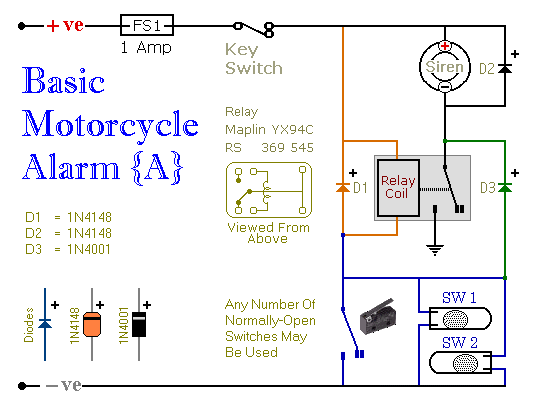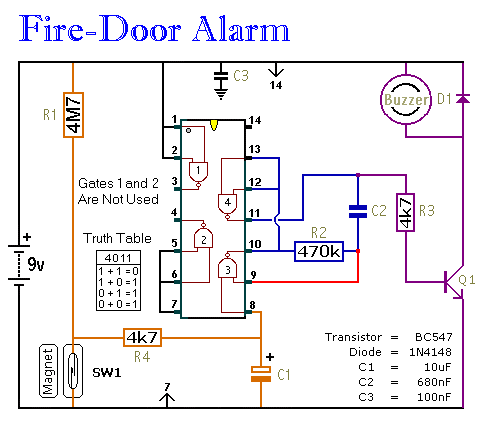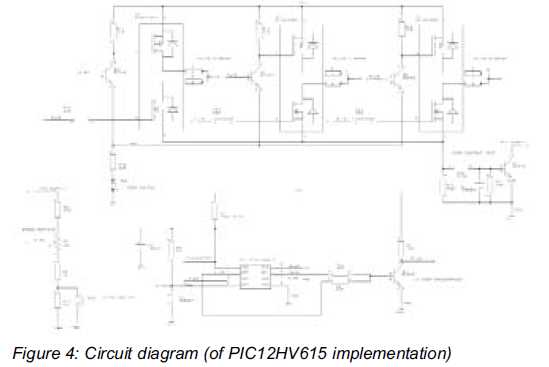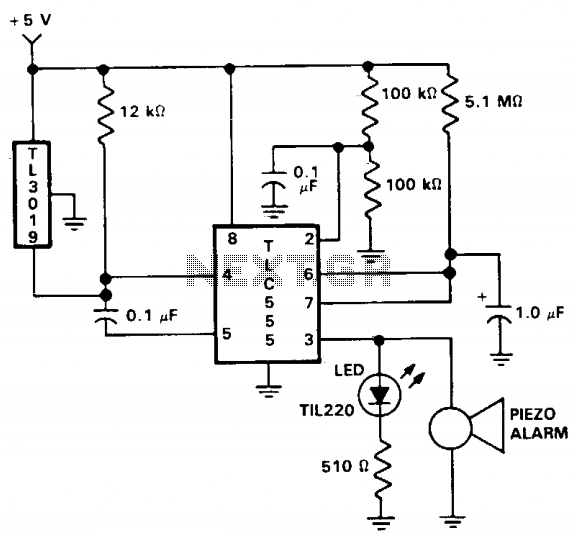
Moto Alarm

These are two easy to build relay-based alarms. You can use them to protect your motorcycle but they have many more applications. If you use relays with 6-volt coils, they'll protect your "Classic Bike". Both alarms are very small. The completed boards occupy about half a cubic inch - 8 cc. The standby current is zero, so they won’t drain your battery. More: Circuit Number Five uses a SPCO/SPDT relay - but you really only need to use a SPST relay. If you are going to use the veroboard layout provided, you’ll need to use the style of relay specified. But you can build the alarm using whatever style of relay.
The described relay-based alarms are compact electronic circuits designed for various applications, particularly for motorcycle security. The circuits utilize relays to create an alarm system that can be activated by unauthorized access or tampering.
For construction, the alarms are designed to fit on a small board, measuring approximately 8 cc, which makes them suitable for installation in tight spaces. The use of relays with 6-volt coils is recommended, particularly for classic motorcycles, ensuring compatibility with typical motorcycle electrical systems.
The first circuit, referred to as Circuit Number Five, employs a Single Pole Changeover (SPCO) or Single Pole Double Throw (SPDT) relay configuration. However, it is noted that a Single Pole Single Throw (SPST) relay can also be utilized, offering flexibility in component choice. When using the provided veroboard layout, adherence to the specified relay type is essential for optimal performance.
The design ensures that the standby current is zero, which is a critical feature for battery conservation, allowing the alarm to remain inactive without draining the motorcycle's battery. This characteristic is particularly advantageous for vehicles that may not be used frequently, as it prevents battery depletion over time.
In summary, these relay-based alarms provide a practical solution for enhancing security in motorcycles and other applications, combining compactness, efficiency, and flexibility in relay selection.These are two - easy to build - relay-based alarms. You can use them to protect your motorcycle - but they have many more applications. If you use relays with 6-volt coils - they`ll protect your "Classic Bike". Both alarms are very small. The completed boards occupy about half a cubic-inch - 8 cc. The standby current is zero - so they won`t drain your battery. Circuit Number Five uses a SPCO/SPDT relay - but you really only need to use a SPST relay. If you are going to use the veroboard layout provided - you`ll need to use the style of relay specified. But you can build the alarm using whatever style of re 🔗 External reference
The described relay-based alarms are compact electronic circuits designed for various applications, particularly for motorcycle security. The circuits utilize relays to create an alarm system that can be activated by unauthorized access or tampering.
For construction, the alarms are designed to fit on a small board, measuring approximately 8 cc, which makes them suitable for installation in tight spaces. The use of relays with 6-volt coils is recommended, particularly for classic motorcycles, ensuring compatibility with typical motorcycle electrical systems.
The first circuit, referred to as Circuit Number Five, employs a Single Pole Changeover (SPCO) or Single Pole Double Throw (SPDT) relay configuration. However, it is noted that a Single Pole Single Throw (SPST) relay can also be utilized, offering flexibility in component choice. When using the provided veroboard layout, adherence to the specified relay type is essential for optimal performance.
The design ensures that the standby current is zero, which is a critical feature for battery conservation, allowing the alarm to remain inactive without draining the motorcycle's battery. This characteristic is particularly advantageous for vehicles that may not be used frequently, as it prevents battery depletion over time.
In summary, these relay-based alarms provide a practical solution for enhancing security in motorcycles and other applications, combining compactness, efficiency, and flexibility in relay selection.These are two - easy to build - relay-based alarms. You can use them to protect your motorcycle - but they have many more applications. If you use relays with 6-volt coils - they`ll protect your "Classic Bike". Both alarms are very small. The completed boards occupy about half a cubic-inch - 8 cc. The standby current is zero - so they won`t drain your battery. Circuit Number Five uses a SPCO/SPDT relay - but you really only need to use a SPST relay. If you are going to use the veroboard layout provided - you`ll need to use the style of relay specified. But you can build the alarm using whatever style of re 🔗 External reference





